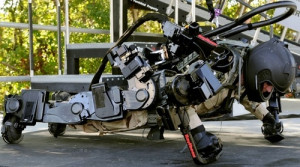A meteor smacked into Jupiter this Friday, and it was caught by an amateur Japanese astronomer. A similar meteor impact on Jupiter took place less than three months ago, and another one so soon hints that our gas giant neighbor may be experiencing shooting stars more frequently than scientists thought, and that it’s just a case of looking in the right place at the right time.
Amateur astronomer Masayuki Tashikawa had his video-equipped telescope pointed in Jupiter’s direction from Kumamoto city on the island of Kyushu early Saturday morning Japan time (around 18:22 GMT or 2:22 p.m. ET Friday). In the 4-second video clip above, the second-long flash can be seen toward the lower left, about halfway through the clip.
“I took it for noise signals at first, but I was really surprised because the image of the light remained on the video,” Tashikawa told Kyodo News.
The phenomenon looks like a repeat of the flash spotted by longtime Jupiter-watchers Anthony Wesley and Christopher Go on June 3. Their observations, combined with follow-up looks by the Hubble Space Telescope, led astronomers to conclude that the flash was caused not by an exploding asteroid or comet, but instead by a fiery meteor that didn’t leave a lasting mark on Jupiter’s cloud tops.
Junichi Watanabe of the National Astronomical Observatory of Japan notes the similarity in a blog post reporting the latest flash.
In the days ahead, professional as well as amateur astronomers will be looking for any traces left behind by this weekend’s event. The preliminary verdict is that there’s no visible scar – which would distinguish both of this year’s observed flashes from the “Great Black Spot” impact of July 2009.
Amateur astronomers have already revolutionized the search for asteroids, and now it looks as if they’re doing the same thing for the systematic monitoring of Jupiter’s cloud tops. Sky & Telescope’s Kelly Beatty quotes Glenn Orton, an astronomer at NASA’s Jet Propulsion Laboratory, as saying it may be time “to establish a worldwide network of Jupiter-monitoring telescopes so that the planet can be watched 24/7.”
Beatty also points out that more observations would be useful to confirm that the flash truly came from Jupiter and not from the random glint of an Earth-orbiting satellite. Let’s hope this latest news flash will spark confirmation of this weekend’s event – and future flashy finds.
Update for 1:10 a.m. ET Aug.. 23: SpaceWeather.com passes along a confirmatory series of pictures from another Japanese amateur astronomer, Aoki Kazuo of Tokyo. The 500-mile (800-kilometer) separation of the two observers “rules out an event near Earth and reinforces the association of the flash with Jupiter,” SpaceWeather.com’s Tony Phillips writes.
Source: MSNBC.



